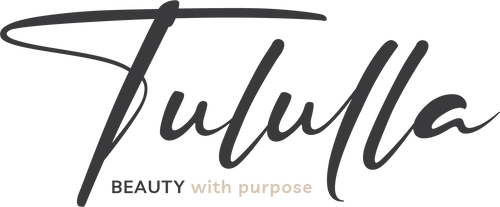You might notice some unwelcome hair shedding after welcoming your baby. Although it’s normal, there’s a lot you can do to slow it down and support new hair growth. Use this guide to help you navigate postpartum hair loss.
Your hair during pregnancy
Postpartum hair loss is linked to pregnancy in more ways than one. So first, we need to unpack what happens to your hair during pregnancy. Did you notice your hair looking thicker and shinier throughout the nine months?
This is due to a few key factors:
1 Hormonal changes
As your little one grows in your tummy, your body experiences significant hormonal shifts throughout the nine months of pregnancy, which can result in postpartum hair loss afterwards. One hormone that fluctuates a lot is oestrogen, which can rise significantly during pregnancy and can lead to changes in hair growth patterns.
High oestrogen levels can prolong the hair's growth phase (anagen phase) and delay the shedding phase (telogen phase). This results in more hair on your scalp at any given time, making it seem thicker.
2 Reduced hair shedding
Normally, a certain percentage of hair is in the telogen or resting phase, which eventually falls out to be replaced by new hair growth. During pregnancy, this shedding process may slow down or even stop temporarily, which gives your hair that thicker, fuller appearance.
3 Improved blood circulation
Pregnancy also increases blood circulation throughout the body, including your scalp. Improved blood flow can nourish hair follicles and encourage hair growth, contributing to thicker-looking hair.
4 Changes in hair texture
Some women may experience changes in hair texture during pregnancy. Hair may become coarser or curlier, which can make it appear thicker.
What causes postpartum hair loss?
According to the American Academy of Dermatology, postpartum hair loss isn't the same as regular hair loss and is actually classified as excessive hair shedding or telogen effluvium.
Therefore, the “hair loss” you experience afterwards is more like saying goodbye to the extra hair you gained and kept during pregnancy. Usually, we all shed some hair, but pregnancy hormones change things, by slowing down the usual daily hair-loss process.
After pregnancy, when your hormones go back to their regular levels, a decrease in oestrogen triggers the restart of hair shedding.
When does postpartum hair loss start?
When it comes to telogen effluvium, a stressful event like illness or giving birth can trigger excessive hair shedding, although according to doctors at Cleveland Clinic- it’s most common for hair loss to start around three months after having your baby.
Whether you’ve noticed that you’re losing a few strands of hair and it’s looking thinner around your hairline, or you’re seeing clumps of hair on your pillow, hair brush or in the shower, it’s important not to panic and trust that this type of hair loss is relatively common after pregnancy.
If, however, you’ve noticed a drastic change in the strength, texture or quality of your hair since having a baby, there’s a lot you can do to return to your hair to its former crowning glory.
How to prevent postpartum hair loss
You might not be able to fully stop the hair shedding in the months after giving birth, but it is possible to slow it down and nourish your hair and scalp with the aim of keeping your hair strong and healthy despite the hormonal shifts that take place.
Here are four ways to manage postpartum hair shedding
Take the right hair supplement
When it comes to nourishing your hair and slowing down hair shedding, your normal multivitamin won’t cut it. Consider adding a good-quality, science-backed hair supplement like our radiant hair VITAMINS to your daily wellness routine, and you won’t believe the difference this can make in just a few weeks. In fact, according to New York-based cosmetic dermatologist, Michele Green, M.D., “The best vitamins for hair growth include B vitamins, vitamin D, vitamin E, zinc, biotin and iron.”
The good news is that our radiant hair VITAMINS contain all these essential nutrients and more. Our unique formula works quickly to slow down hair shedding whilst strengthening the hair you do have and preventing breakage, all whilst supporting a healthy scalp environment. Key amino acids along with biotin, zinc, iron, Ashwagandha and Saw Palmetto all work together to nourish your hair and support its growth from within.
START YOUR HAIR GROWTH JOURNEY TODAY
Aim for a balanced diet
Healthy hair needs plenty of nutritious foods that are rich in vitamins, minerals, and proteins – to continue growing and thriving. Include foods that are high in biotin, such as eggs, nuts, and leafy greens, as they can promote healthy hair growth. Protein also contains all the building blocks your hair follicles need to stay strong and robust. And, don’t forget your five-a-day!
Fruits and veggies are vital for hair growth because they supply essential vitamins, antioxidants, and nutrients that nourish hair follicles, promote circulation, and maintain a healthy scalp environment, all contributing to stronger and faster hair growth.
Be gentle with your hair
It may sound strange, but we can’t emphasise the importance of being gentle with your hair enough. Avoid tight hairstyles that pull on the hair shaft and minimise the number of times you use heat styling tools. Use a wide-toothed comb to detangle your hair and opt for sulphate-free and mild shampoos to prevent excessive dryness.
A silk pillowcase can help reduce hair shedding by minimising friction and preventing hair breakage, allowing your locks to stay smoother and healthier.
Manage your stress levels

You may have heard about the importance of keeping your stress levels in check for your heart health etc, but did you know that research confirms that high stress levels are directly linked to Telogen effluvium?
We know that the postpartum period can be stressful. But there are a few small tweaks you can make in your day to bring down your stress levels. Even just a few minutes of calming activities like yoga, meditation, or deep breathing exercises help reduce stress levels by triggering the body's relaxation response, regulating cortisol production, and promoting the release of mood-enhancing neurotransmitters.
They also encourage mindfulness and a stronger mind-body connection, reducing anxiety and muscle tension. Moreover, these practices improve sleep quality (even when you’re getting less sleep in those early days!).


